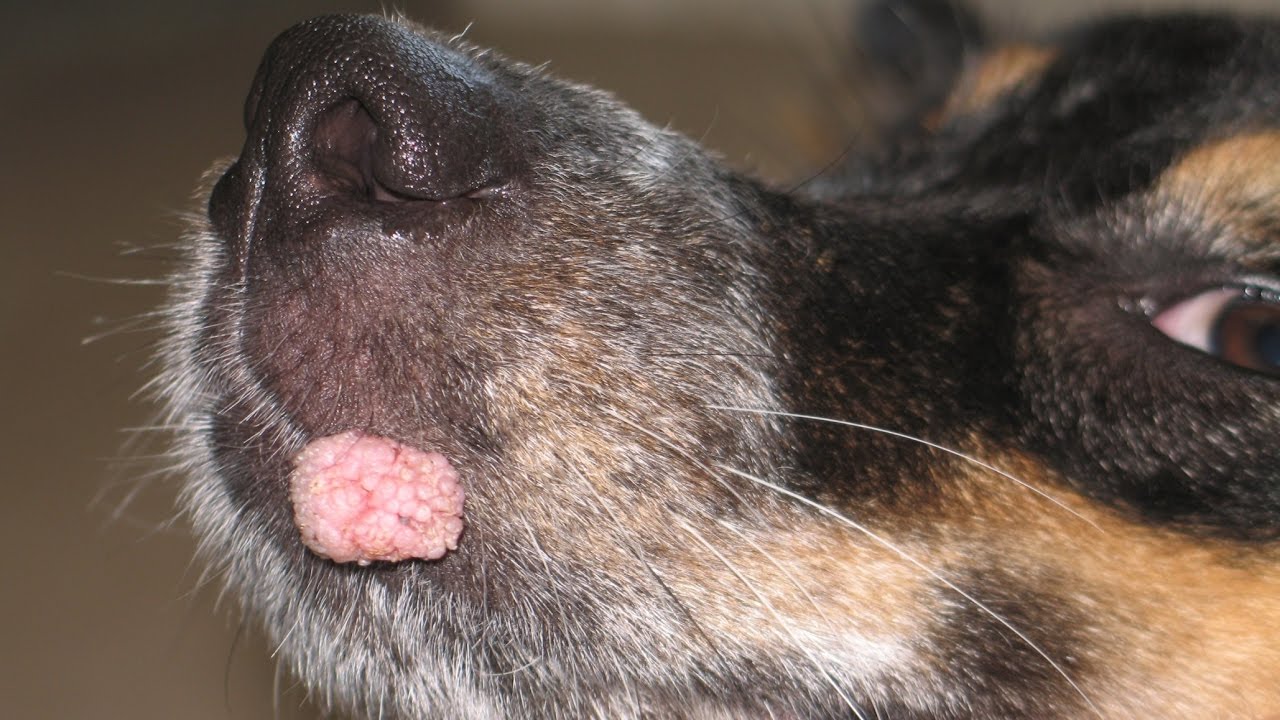Papillomas (or dog warts) are usually unsightly and can easily spread across your dog’s skin if not properly treated. Warts can also be very painful, especially if they grow on the mouth or feet of your dog.
While the diagnosis of Papillomas is seldom serious, it is worth your attention, especially if you don’t want the lump to interfere with your dog’s daily activities.
So, if your canine companion comes down with warts, the first step to take is to figure out how you can get rid of them, possibly with products that are readily available at home.
This post will highlight some of the best ways you can leverage to get rid of dog warts at home.
But before we delve deeper into details, let’s look at a few basics about canine warts.
What Is Canine Warts?
Dog warts (or Papillomas) are small benign tumors on a dog’s skin. They usually appear as cauliflower-shaped, inflamed polyps and can be whitish-yellow or skin-colored. They may also appear as scaly, flat, hard inverted masses, or raised areas.
Dog warts are caused by Papillomavirus, which is quite similar to the virus that causes human warts. Although most dog warts are not painful, they may be irritating.
Generally, warts are common in dogs with weak or underdeveloped immune systems, which is why they are prevalent in puppies, old dogs, and those with compromised immune systems like dogs on steroids.
Another fact worth noting about canine warts is that they are species-specific, which implies that they cannot be transmitted to humans.
Canine Warts versus Sebaceous Adenomas
Sebaceous adenomas in older dogs are often confused with warts. In fact, some dog owners call them “old dog warts”.
However, they are benign growths of the skin’s oil glands. They usually appear like warts but if you are keen enough, you will realize that they are not as rough on the surface.
Confused? Well, don’t fret; you can always consult your vet to help you establish whether your pup has warts or sebaceous gland adenomas.
Where Do Dogs Get Warts?
Dogs often get the Papillomavirus from other dogs with the virus—via a break or weakness in their skins.
The virus can live in an environment for several weeks, which implies that a dog can pick Papillomavirus that was shed by another dog a few weeks back.
Warts take 1-2 months to develop after a dog has been infected with the Papillomavirus.
Why Should You Treat Dog Warts?
Dog warts generally disappear on their own over time as a dog builds a defense mechanism against the Papillomavirus.
However, there are times when this is not the case and treatment becomes necessary, including:
- Sometimes they become so many and large than expected.
- Dogs with immunity issues or other serious health conditions may not be able to get rid of warts naturally.
- Warts may grow in a way that interferes with your dog’s daily activities like eating, drinking, walking, or playing.
- They may bleed or become infected.
- They may take too long to disappear. For instance, warts that take more than 3 to 5 months should be treated.
Home Remedies for Dog Warts
1.Apple Cider Vinegar (ACV)

Apple Cider Vinegar has acetic acid that can kill some types of viruses and bacteria on contact. So, it is believed that vinegar not only kills the Papillomavirus but also destroys the infected skin, causing the tumor to fall off.
The acid in the vinegar is also believed to cause irritation, which, in turn, stimulates the dog’s immune system to fight the Papillomavirus.
- Mix about 2 parts of apple cider vinegar with one part of water.
- Rub petroleum jelly on the surfaces around warts to prevent potential irritation of the unaffected areas.
- Soak a clean cloth or cotton wool in the solution and apply directly on warts.
- Allow the vinegar to get absorbed for a few minutes then wipe off any excess that overflows to unaffected areas.
Remember that while vinegar is a weak acid (contains 4-6% acetic acid), it may cause chemical burns or irritations.
So, when applying ACV on dog warts, you should exercise extreme caution. For instance, avoid using vinegar on warts that are located near your dog’s genitals or eyes.
2. Castor Oil
Castor oil has potent antimicrobial and anti-inflammatory properties, so applying it directly to your dog warts will soften warts, decreasing potential itchiness and irritation caused by warts.
In turn, this will prevent your dog from scratching warts and breaking them open, which could make them bleed, become infected, and slow down the healing process.
Apply castor oil once a day, every 1-2 days until warts disappear.
3. Thuja

Thuja, an evergreen tree native to eastern North America, has been receiving rave reviews among dog owners over the past few years, thanks to its effectiveness in treating dog warts.
It comes in pellets or liquid forms, which are all considered to be safe for dogs. Most vets vouch for Thuja occidentalis 30c and recommend giving your dog 6-10 pallets daily for one week.
To ensure that it gets absorbed by your dog’s membrane, it should be given directly in the mouth—and not the throat.
However, Thuja shouldn’t be given to pregnant dogs as it may cause loss of pregnancy.
Learn more about Thuja for canine warts here: Thuja for Dog Warts: Does it work?
4. Aloe Vera
Aloe Vera contains malic acid, which can burn and dry warts. It also boasts excellent antibiotic properties, which can go a long way in aiding fast healing of warts.
Simply cut the leaf of the plant and apply the gel on warts. Soon, warts will dry up and peel off.
5. Baking Powder
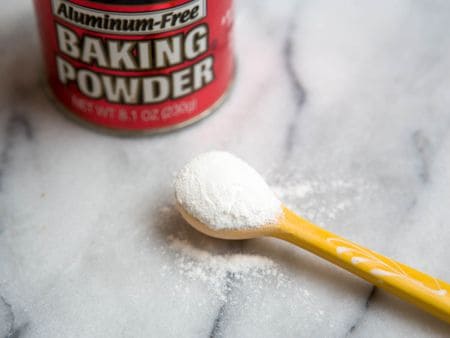
Due to its antiseptic and anti-inflammatory properties, baking powder is one of the best home remedies for a wide range of skin conditions in dogs, including warts.
It is also a natural exfoliant, so it is believed to not only dry warts but also destroys their structures.
Mix baking soda with castor oil or a teaspoon of white vinegar to form a thick paste and apply on warts twice a day and watch warts disappear in 2-3 weeks.
6. Tea Tree Oil
Tea tree oil has potent antimicrobial properties and has been used for centuries to treat a wide range of skin conditions in humans.
It also boasts excellent antiviral properties, which is believed to help get rid of warts in both humans and dogs.
Dilute 1-2 drops of tea tree oil with a suitable carrier oil like olive or almond and apply the mixture on warts.
Allow the mixture to sit on for 5-10 minutes.
Repeat 2-3 times daily until warts disappear.
If your dog shows any irritation symptoms, consider diluting the oil even more.
7. Dandelion Weed
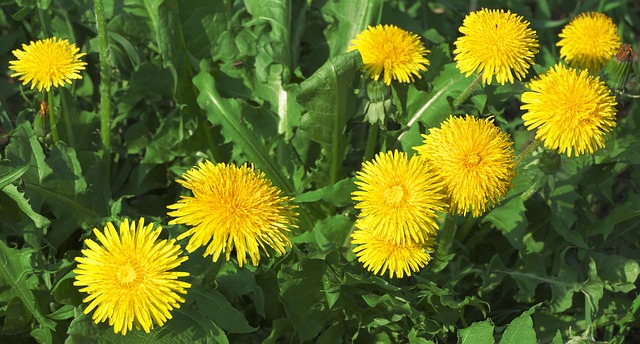
Dandelion weed has been used for centuries by the Chinese as a traditional remedy for a wide range of skin conditions, including warts.
Past studies have also shown that dandelion extract may decrease skin inflammation, boost collagen production, and soothe skin irritation—effects that may be useful in fighting Papillomavirus.
Dandelion weeds aren’t just good for warts but they are also a great ingredient in dog food—they are natural sources of vitamin A, C, B, D, and K as well as minerals like zinc, iron, potassium, calcium, and manganese.
Break the weed, squeeze its sap, and apply on warts 1-2 times a day. Repeat for 2-3 weeks until warts disappear.
8. Banana Peel
Banana has high amounts of potassium, which is believed to fight the Papillomavirus.
Banana is also rich in enzymes, which have a healing effect on your dog’s skin.
All you need to do is rub inside of a banana peel on warts daily until warts begin to disappear.
9. Garlic
Garlic is rich in allicin acid and has strong antimicrobial activity against several types of fungi, viruses, bacteria, and parasites.
It is, therefore, touted as one of the best remedies for skin diseases in dogs, including warts.
Crush a few cloves of garlic and mix it with water.
Rub the mixture on warts.
Repeat daily for 3-4 weeks or until warts disappear.
10. Pineapple
Pineapple is rich in bromelain, a mixture of enzymes that are known to digest proteins.
Applying Pineapple on dog warts is, therefore, believed to clear them off by dissolving the protein in the Papillomavirus.
Although there are no scientific studies that support the potential of bromelain to remove warts, many dog owners have reported success in removing warts from their dogs using pineapple juice.
Apply fresh pineapple on the wart daily until warts disappear.
Alternatively, soak warts in pineapple juice.
11. Basil
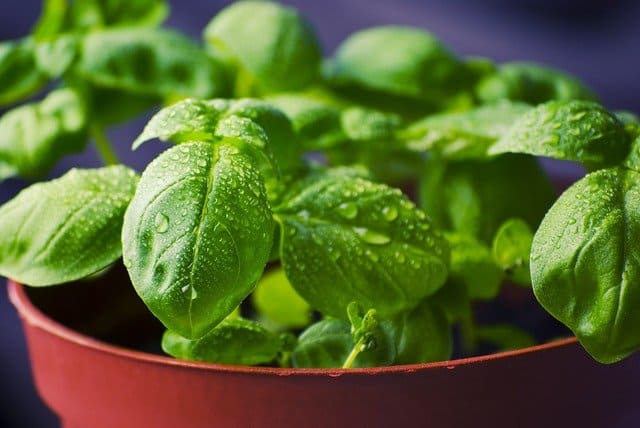
Basil has antiviral properties, which is believed to be effective in fighting different types of viruses, making this herb one of the most recommended home remedies for warts in dogs.
Crush the leaves of the herb until they form a paste and apply on warts. Repeat daily for 1-2 weeks.
12. Honey
Like Basil, honey has excellent antiviral and antibacterial properties. So, covering dog warts with honey is believed to deprive them of oxygen and eventually kill them.
Apply honey on warts 1-2 times a day until warts disappear.
For fast results, consider using medical-grade honey instead of your kitchen honey.
You can also give your dog moderate amounts of honey to boost his immunity, which can also go a long way in helping fight warts.
13. Fig Juice
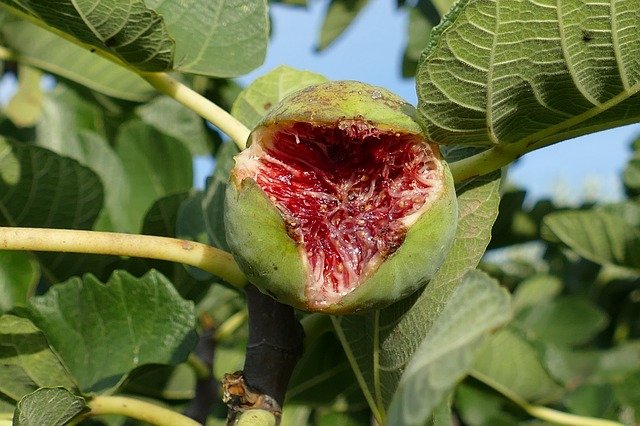
Fig juice is rich in antivirals and antioxidants, making it effective in fighting warts in dogs.
Apply some fresh fig juice on the wart and allow it to sit on for 5-10 minutes.
Repeat this 2-3 times for about 2 weeks.
14. Vitamin E
Vitamin E is also believed to be great for dog warts due to its ability to boost immune function and fight viral infections.
Pierce a small hole in any Vitamin E capsule and apply the contents directly on warts using a cotton swab.
Repeat 3-4 times a day for 2-3 weeks or until the dog warts clear up.
15. Vitamin C
Vitamin C is known to boost immunity in humans and dogs alike. It is also essential for healthy skin tissues and the healing of wounds.
Since dog warts are prevalent in dogs with weak or compromised immunity, it is believed that Vitamin C can help fight the Papillomavirus.
Crush any typical Vitamin C tablet, mix it with water to form a paste, and apply on warts.
Repeat daily for 3-4 weeks until warts clear off.
16. Keep your dog away from susceptible dogs
Dog warts can be contagious, so if your dog’s skin has deep abrasions, damaged or compromised or if you know that your Fido’s immune system is a bit weak, consider keeping him away from dogs that have warts.
If possible, avoid taking him to busy dog parks, dog daycare facilities, pet stores, or dog shows.
If you have multiple dogs and one has warts, consider protecting others from getting the virus by keeping them separated and separating their toys, food, and water bowls.
It is also your responsibility to protect other doggies in your neighborhood from picking the virus, so skip doggy care, pet parks, and other places where dogs visit or play until your vet advises you that it is safe to do so.
17. Proper Diet

As aforementioned, warts appear in dogs due to weak or compromised immune systems.
Therefore, one proactive measure that you can take to lower your dog’s chances of getting warts is to feed him a healthy and balanced diet. This will ensure that his immune system is strong enough to fight off the Papillomavirus and other infections.
Feed your dog high-quality diet, including vitamins and other immunity-boosting supplements like Nutrition Strength and Mushroom Max. The two are particularly known to fight warts due to their antioxidant and anti-inflammatory properties as well as their ability to boost immunity systems in dogs.
The Bottom Line
Hopefully, the tips we’ve covered in this post has shed some light on how to get rid of dog warts at home.
As you can see, most of the things you need to help your dog fight the Papillomavirus are already on your kitchen counter.
So, next time you notice those little pink modules bud out of your pup’s mouth, don’t get traumatized—simply reach out for some of the highlighted remedies and clear those unsightly lumps.
Most importantly, if a home remedy doesn’t get you results, seek the help of a vet as some of these growths may resemble dog warts but may be other things like mast cell tumors and other malignant growths.
There are also instances when dog warts may become infected, necessitating the use of antibiotics.
Related Posts:
Best Home Remedies for Dog Drooling
What Home Remedy Can I Give My Dog For Shedding?
50 Home Remedies to Get Rid of Fleas on Your Dog
As an Amazon Associate, we may receive a small commission from qualifying purchases but at no extra cost to you. Learn more. Amazon and the Amazon logo are trademarks of Amazon.com, Inc, or its affiliates.

